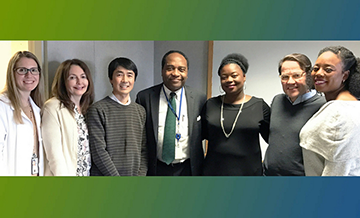Director's Note
Following the path of hope through research

When Discovery channel viewers saw Dr. John Tisdale's lab in the documentary, "First in Human," they saw moments that were decades in the making.
Dr. Tisdale talked about gene and cell therapy, the lab's success treating people for sickle cell anemia using bone marrow transplants and the next steps for sickle cell research.
Research is a cumulative pursuit—step upon step. In 1949, the great Dr. Linus Pauling published crucial work on sickle cell, calling it "the first molecular disease." Near the beginning of my research career, I began working on ways to improve outcomes for people with sickle cell disease (SCD).
With colleagues, we pulled insights from around the field, including the finding that some people with sickle cell retained the development of fetal hemoglobin that most people lose at birth, and that fetal hemoglobin helped influence their SCD prognosis. But why? And could we somehow cause that fetal hemoglobin to "turn on" in others?
Using a drug typically used to treat cancer, we found success—but at a high price. The drug was toxic, and long-term use could cause other problems. So we turned to hydroxyurea, a milder drug used for precancer that could be tolerated for long periods—and it worked. We developed the first effective and, in 1998, Food and Drug Administration-approved drug to treat SCD.
The NIH Clinical Center had a large role in that success. We were able to have people stay in the Center for long periods without worry about cost, providing time to adjust dosage and closely monitor reaction until we found the right balance for treatment.
While hydroxyurea helps most people, it doesn't help everyone and isn't a cure—both of which led to the work Dr. Tisdale, myself and others are doing in my intramural Molecular and Clinical Hematology Branch. It's just one of the many stories you'll see in the "First in Human" documentary, and I hope you'll read in this issue and watch the series to learn about the exciting research happening every day at what many patients call the "National Institutes of Hope."
As you look through the many articles and read about the people making a difference through work or funding from NIDDK, I hope you'll see these as markers of hope, knowing that today's discoveries form the basis for tomorrow's cures.
In good health,
Griffin P. Rodgers, M.D., M.A.C.P.
Director, National Institute of Diabetes and Digestive and Kidney Diseases
Follow NIDDK on Twitter @NIDDKgov

